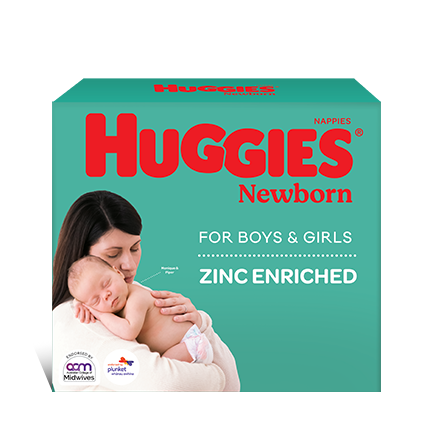If we put aside the enormous emotional implications for a moment by definition, perinatal mortality refers to the numbers of babies who are stillborn, or those who die within the first week of their life per 10000 live births. Another name for this is perinatal death. Gaining an accurate estimate of the incidence of perinatal mortality relies on precise recording and completion of data by health care professionals. Only then can research be directed towards the ever important goal of lowering the numbers.
The perinatal mortality rate is a good indication of how a country is caring for its maternal and infant population. Funding, planning and improved health care for mothers and their babies is never wasted. It can provide a very small level of comfort to parents to know that through sharing their experiences, the risks are reduced for future generations of families who may be affected by perinatal mortality.
Causes of Perinatal Mortality
The major cause of perinatal mortality rate comes from babies who are stillborn at birth. This can be in association with prematurity, which accounts for nearly 30% of the numbers of neonatal deaths. Birth defects and respiratory distress syndrome due to prematurity also contribute to many of the figures.
Death of a baby can occur when it is still within the uterus and before labour has started. It can also happen during labour or shortly after birth. Sometimes, it is not possible to identify exactly when a baby's death has occurred.
Stillbirth - What is it?
Stillbirth is what occurs when a baby dies whilst they are still in the uterus. When a pregnancy has reached 20 weeks of gestation, then stillbirth, rather than miscarriage becomes the correct terminology.
When a baby has passed 20 weeks of gestation and dies, their death must be registered and a burial or cremation performed.
Risk Factors for Perinatal Mortality
- When a mother is overweight or obese. Having a Basal Metabolic Index (BMI) measuring over 25 increases the risk.
- Being older than 35 years.
- Pregnancy and reproductive history which have included previous foetal mortality.
- Baby who is small for gestational age.
- Mothers who drink excessive quantities of caffeine.
- Multiple births.
- Sub optimal or non-existent obstetric care.
- Low socio-economic status.
- Being of indigenous or ethnic descent.
- Smoking during pregnancy.
- Substance abuse.
- Domestic violence within relationships and in households, particularly physical violence.
- Drinking excessive amounts of alcohol.
- Complications during pregnancy or high risk pregnancies such as occur with pre-eclampsia, gestational diabetes, placenta praevia and placental abruption.
- Not following safe sleeping recommendations.
- Some psychiatric illnesses are known to increase the risk.
- Polycystic Ovarian Syndrome (PCOS) because of the impact of hormonal fluctuations.
- Coeliac Disease.
Causes for Perinatal Mortality
- Genetic or chromosomal abnormalities.
- Structural abnormality of the baby's heart or vital organs.
- Foetal distress or asphyxia (interruption to the baby's blood flow and oxygen) during labour.
- Premature labour or premature rupture of the membranes.
- Maternal or foetal infection.
- Cholestasis (liver complication).
- Rhesus Disease.
- Ante-partum haemorrhage.
- Intra-Uterine growth restriction.
- Problems with the placenta which result in inadequate oxygen and/or nutrients flowing to the baby.
- Problems with the cervix e.g. premature dilatation.
- Mercury toxicity most commonly occurring as a result of ingestion of fish with excessively high levels of mercury.
- Maternal trauma such as car accidents. N.B. Seatbelts are still considered to be safe and a primary safety measure for a pregnant woman and her unborn baby.
- Unexplained causes.
What Can I Do to Prevent It?
It is a fact that having good quality, regular ante-natal care is the first step towards having a healthy pregnancy and delivering a healthy, live baby. However, this is not a guarantee. Avoiding risky behaviours such as smoking, drinking alcohol or taking illicit drugs, and aiming to stay well all help to support a healthy pregnancy and delivering a healthy, live baby at term.
If you fit into the category of having a high risk pregnancy or have experienced repeated miscarriages or stillbirths, then you will meet the criteria for specialist obstetric management. Many large maternity hospitals have teams of medical staff who specialise in complicated pregnancies.
How Will I know if My Baby's not OK?
A change, decrease or lack of foetal movements is one of the earliest signs of problems. Vaginal bleeding, abdominal pain, an impending feeling of doom or just a vague feeling that something is not right with the baby can all provide an indication of problems.
Ultimately, a diagnosis of foetal death is confirmed via ultrasound when there is an absence of a foetal heart beat. The sonographer may request a second opinion from a colleague to ensure that their diagnosis is accurate.
What Happens Next?
The tragic loss of a baby leads to many physical and emotional changes. After a baby dies in utero, labour will often commence spontaneously. The uterus will start contracting and/or the membranes will rupture. Some women prefer to have their labour medically initiated as soon as they are told their baby has died. They feel they want to have the pregnancy over and done with as soon as possible and will request a caesarian section delivery. Though understandable, this is not ideal. There is an increased likelihood of complications during and after caesarians and a much longer recovery period. This can also influence future labours and deliveries, potentially increasing the risks of complications in the future.
Some mothers feel they want to savour the remaining days of their pregnancy and have the opportunity to grieve for their baby whilst it is still a physical part of them. For this reason they decline offers of induction and aim to spend some time alone or with their family. Every woman is unique and there is no one right way to respond to the devastating news of their baby's death.
Problems can arise though if delivery has not occurred within a week or so after the baby has died. There is a risk to the mother of contracting a blood clotting problem which could compromise her own health. For this reason, if labour has not spontaneously begun within a week, then an induction is recommended.
What about Kick Charts?
There is currently some disagreement regarding the value of mothers writing up kick charts to record their baby's movements. Some experts report they lead to an unnecessary degree of anxiety and don t allow for the normal peaks and flows of foetal movement and then relaxation. Others claim they are helpful and can alert a mother to potential problems.
For clarification on what is right for you, speak with your own health care provider.
Where Can I go for Help?
- Your local GP, community midwife or obstetrician.
- A Psychologist, psychiatrist or social worker at your local community health centre.
- Miscarriage, Stillbirth and Neonatal Death Support SANDS www.sands.org.au or [email protected] or 1300 000SANDS or 1300 72637
- Stillbirth Foundation Australia 02 99673229 www.stillbirthfoundation.org.au
- Bonnie Babes Foundation 24 hour grief counselling helpline 1300 266643 www.bonniebabes.org.au
- SIDS and Kids www.sidsandkids.org Teddy Love Club 1800 824 240 www.teddyloveclub.org.au
Recommended Reading
- Pregnancy Loss Surviving miscarriage and stillbirth: Zoe Taylor (2010) Harper Collins
- An Inconceivable Notion Stories of coping with infertility and childlessness: edited by Justine Davies (2010). Finch Publishing
- Small Miracles Coping with infertility, miscarriage, stillbirth and premature birth: Rachel Stanfield-Porter & The Bonnie Babes Foundation (2009) Hachette Australia
Last Published* December, 2022
*Please note that the published date may not be the same as the date that the content was created and that information above may have changed since.

















